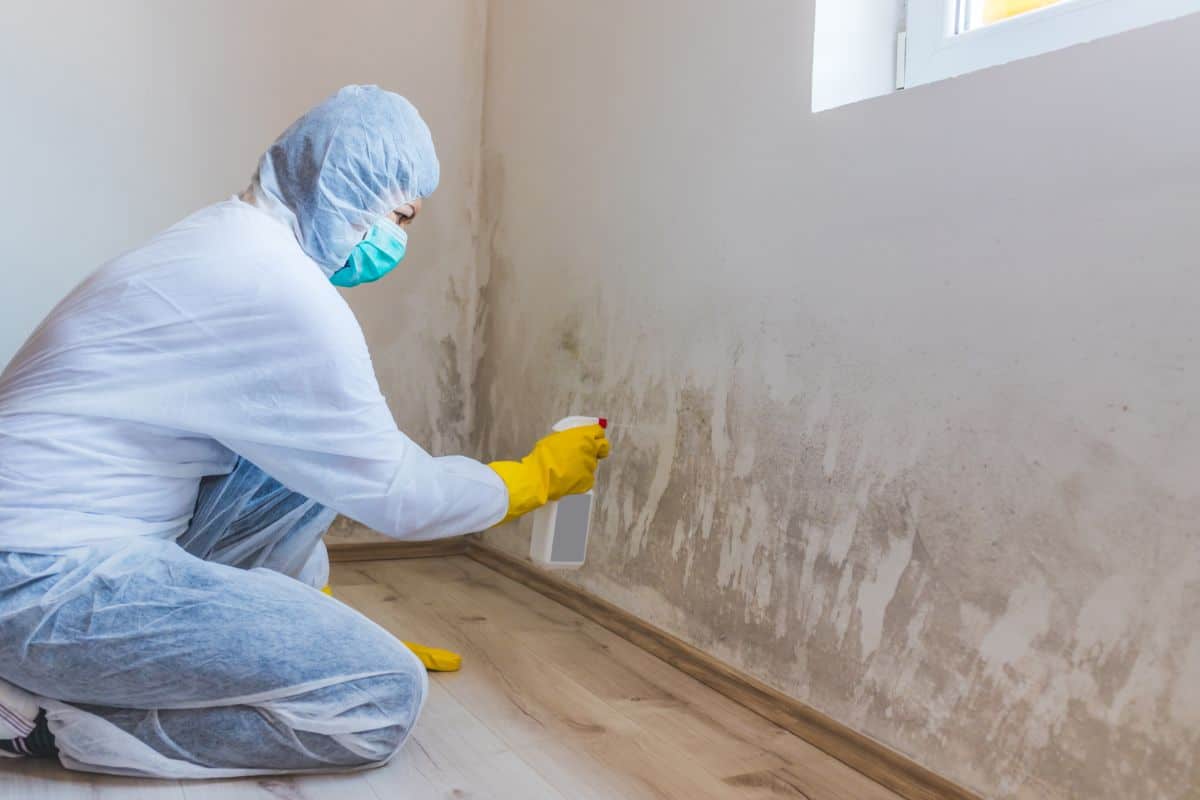Mould can cause health problems, particularly for those with allergies or asthma. To prevent mould in your home, either tackle it yourself or hire a professional if necessary.
Mould thrives in the darkest, dampest areas of your house. It’s more than just a cosmetic issue; mould can damage your home and contribute to health issues.
Let’s explore the types of mould you’re most likely to encounter, the potential effects on your health, and how to eliminate mould effectively.
What is mould?
Outdoors, moulds are vital to the ecosystem, helping to break down plant and animal matter. Indoors, however, mould can become problematic, causing allergies and infections in some individuals.
Types of mould
Multiple types of mould can grow in the same area, and distinguishing between them often requires testing. Fortunately, you don’t need to know the exact type to remove it effectively.
- Cladosporium: Brown, green, or black, Cladosporium grows in both warm and cool locations. It’s commonly found on wood, carpets, fabrics, and in heating and cooling ducts.
- Penicillium: This fuzzy mould appears blue, green, or yellow. It’s often found under carpets, in basements, and in insulation, especially after water damage.
- Aspergillus: Green, white, or grey with dark spots and a powdery appearance, Aspergillus doesn’t need much ventilation. It thrives on fabrics, walls, attics, basements, and dry food items.
Symptoms of mould exposure
Having mould in your home won’t necessarily make you ill, but it can potentially cause certain health issues. Touching or inhaling mould spores can lead to allergy-like symptoms such as:
- Runny nose and congestion
- Eye irritation
- Sneezing
- Coughing
- Sore throat
- Skin rash
- Headache
- Lung irritation
- Wheezing
Mould exposure is not usually an emergency, but you should inform your doctor if you have a health condition that increases your risk of complications and you suspect you’re experiencing symptoms of a mould-related infection.
Mould in the house
Signs of mould include:
- A musty, earthy smell.
- A nearby source of moisture with minimal light.
- Warping, cracking, or peeling of the affected material.
- A drop of bleach lightens its colour within a minute or two.
Unchecked mould will continue to grow, whereas dirt and old stains will not.
How common is mould in buildings?
A 2017 study found mould in every public building studied, with an average of about 14 instances of mould per building. Another 2012 review of studies across 31 European countries found mould in 1 in 6 homes, noting that the prevalence of mould can vary greatly depending on the regional climate.
How does mould get indoors?
Outdoor moulds release tiny spores that float through the air, entering your home via:
- Doors
- Windows
- Heating and air conditioning vents
- Clothing and shoes
- Pets
Once inside, mould spores can grow in the right conditions, such as:
- In sinks, bathtubs, and showers
- Near leaky pipes
- Around windows
- In basements, crawl spaces, and attics
They can latch onto a variety of materials, including:
- Fabrics
- Carpet
- Paper
- Wood
- Ceiling tiles
- Dust
- Paint
- Wallpaper
- Insulation
Causes
Mould is ubiquitous, and everyone breathes in mould spores. Mould allergies occur when your immune system overreacts to certain types of mould, treating them as allergens. This can result in symptoms such as sneezing and nasal congestion.
Risk factors
Risk factors for mould allergies include:
- Family history of allergies
- Living or working in a building with over 50% humidity or poor ventilation
- Exposure to environments that have been flooded or have leaky pipes
- Occupations with higher mould exposure, such as:
- Farmworkers
- Lumber millers
- Woodworkers
- Winemakers
Treatment
If you suspect mould exposure is causing your symptoms, consult a doctor. It can be challenging to distinguish between mould, another condition, or an allergy. Your doctor may recommend skin or blood tests to determine if you have a mould allergy.
Complications and related mould illnesses
Most people experience only mild allergic reactions to mould exposure. However, mould can occasionally cause more serious health issues, particularly in individuals with certain risk factors.
Infections
While most people breathe in mould spores without complications, those with specific health conditions may be at risk of lung infections or other infections from certain moulds. Examples include:
- Aspergillosis
- Histoplasmosis
- Sporotrichosis
- Valley fever (coccidioidomycosis)
You may be at higher risk for these illnesses if you have conditions such as:
- Asthma
- Chronic obstructive pulmonary disease (COPD)
- Sarcoidosis
- Compromised immune system, including individuals on corticosteroids or with HIV
- Cystic fibrosis
- Tuberculosis
Asthma
In individuals with asthma, an allergic reaction to mould may trigger an attack, requiring inhalers to manage symptoms. Some researchers have found that high levels of mould in homes may be a risk factor for asthma in school-aged children.
Pneumonitis
Exposure to a large amount of mould can sometimes cause a severe reaction known as hypersensitivity pneumonitis, usually due to occupational hazards rather than home exposure.
Other complications
There have been rumours linking black mould exposure to health issues like memory loss and headaches, supposedly due to mycotoxins released by black mould. However, experts generally agree that black mould is not linked to an increased risk of specific health issues. Studies have found no evidence that black mould exposure causes health problems, and mycotoxins in the air have not been linked to disease.
How to get rid of mould
You can often remove household mould yourself using:
- Commercial products
- Soap and water
- A bleach solution (no more than 1 cup of bleach per 1 gallon of water)
Before you begin:
- Open windows
- Wear protective eyewear, nonporous gloves, and a face mask or N95 respirator
- Never mix other cleaners or ammonia with bleach to avoid toxic fumes
Use a brush to scrub mould off surfaces thoroughly. Porous materials like carpeting, furniture, and ceiling tiles may need to be discarded. Avoid painting or caulking until the mould is completely gone.
Seek a professional contractor with expertise in safe mould removal if:
- There’s a large amount of mould or it’s difficult to reach
- You’ve had severe water damage
- You’re at high risk of symptoms from mould spores
Prevention
While it’s impossible to eliminate mould entirely, you can make your home less hospitable to it by:
- Fixing water leaks immediately and drying the area with fans
- Repairing or replacing leaky or sweaty windows
- Maintaining 50% humidity or lower in your home with air conditioners and dehumidifiers, and servicing them as recommended
- Avoiding carpeting in bathrooms, laundry rooms, or basements
- Ensuring good ventilation, using exhaust fans or opening windows when showering or bathing
- Using cleaning products that kill mould, wiping down tiles, and allowing shower curtains to dry
- Not leaving wet towels or clothes in piles or in laundry hampers or washing machines
- Ensuring water drains away from your house
- Using mould inhibitors in wall paints, and ensuring surfaces are dry before painting
Takeaway
If you have a mould allergy or chronic lung condition like asthma, you’re at risk of more severe symptoms and complications. Regular home maintenance can make it harder for mould to grow indoors. If you find mould, you can take steps to remove it yourself, but if it’s a big job or you have respiratory issues, consider hiring a professional contractor to remove the mould safely and make necessary repairs.
- Mold: Symptoms of Exposure, Risks, and More - June 11, 2024
- The Comprehensive Guide to the Benefits of Alpha Glyceryl Phosphorylcholine (Alpha GPC) Nootropics - October 26, 2023
- What are DELTA 9 THC PRODUCTS - July 17, 2023

